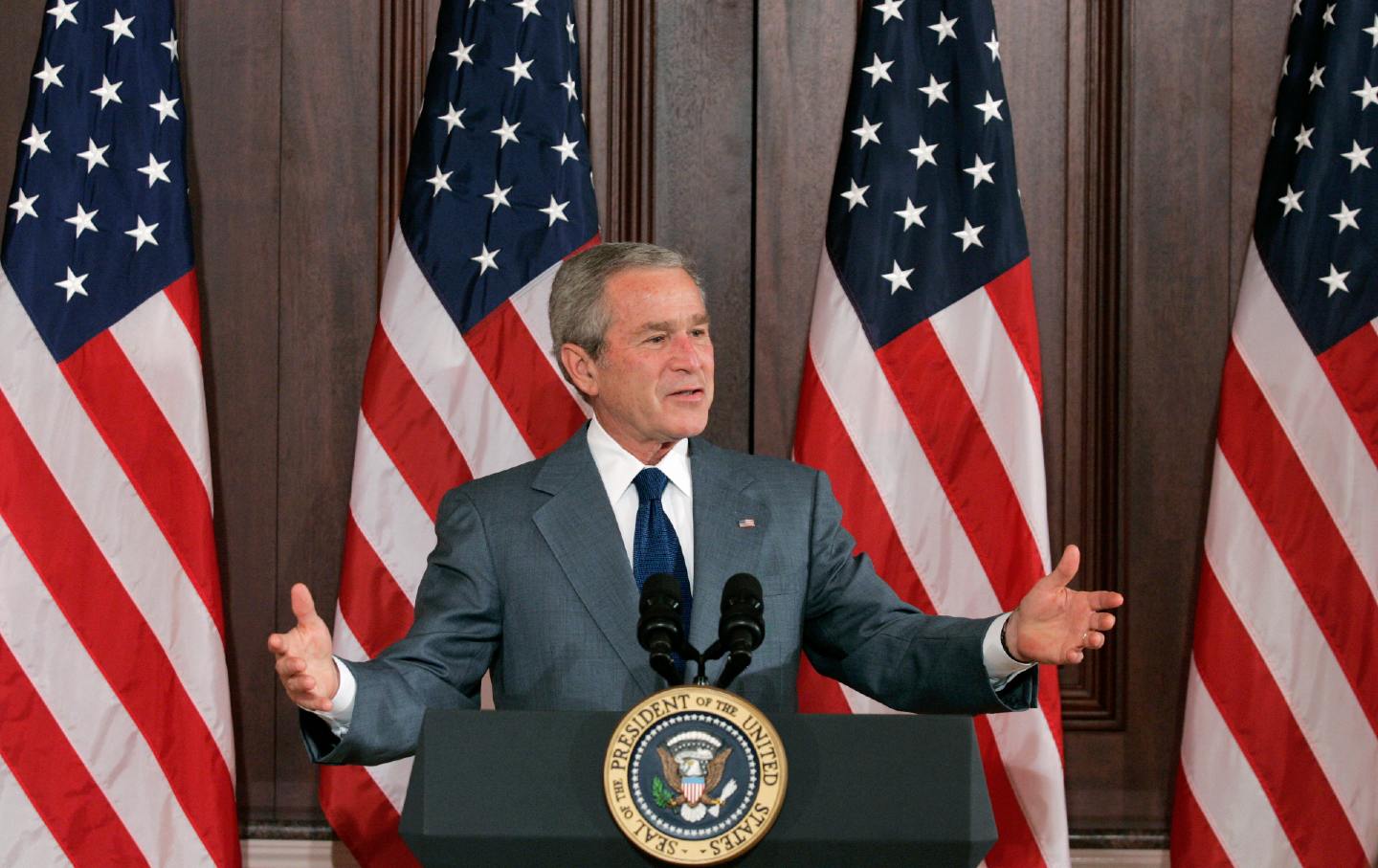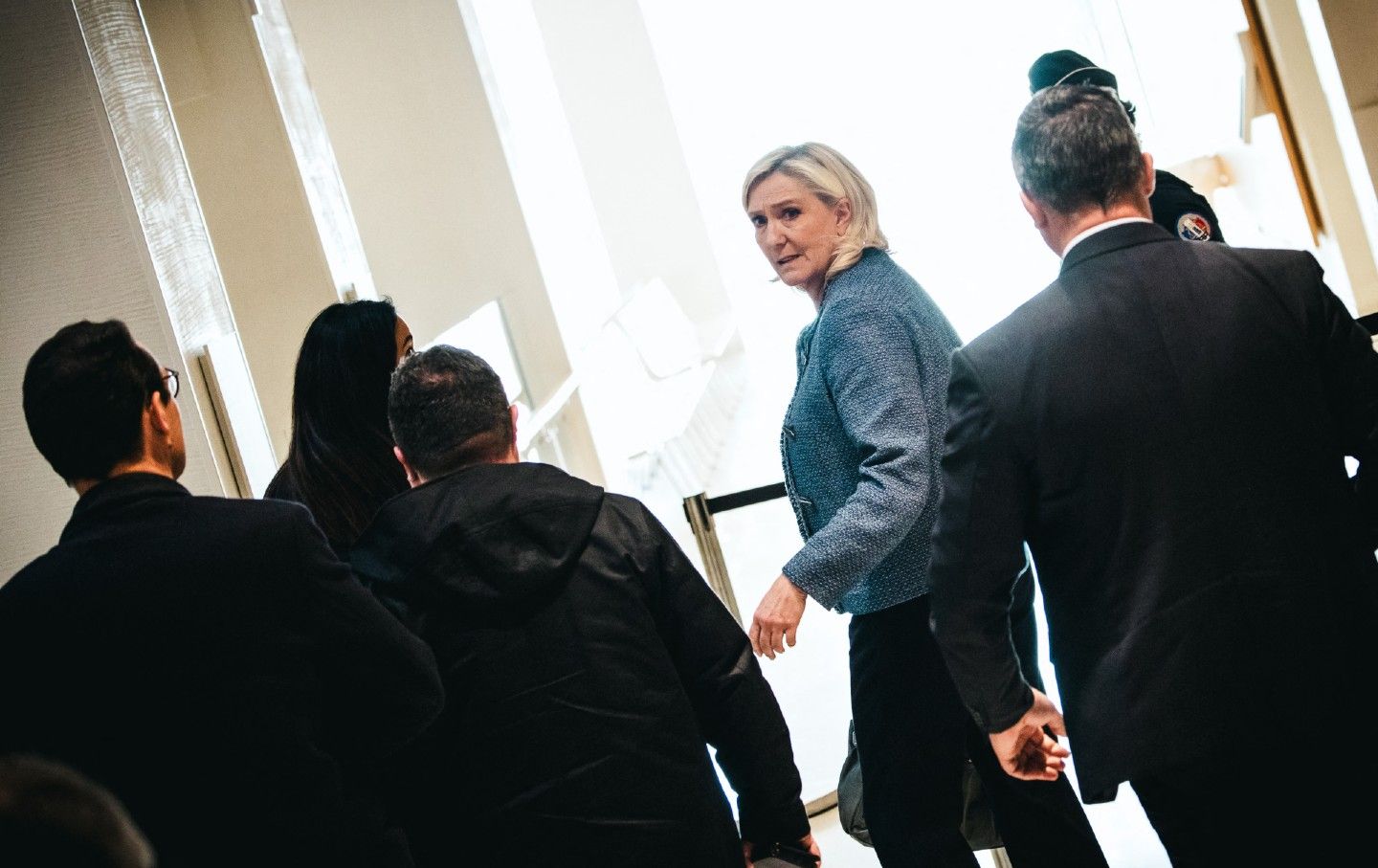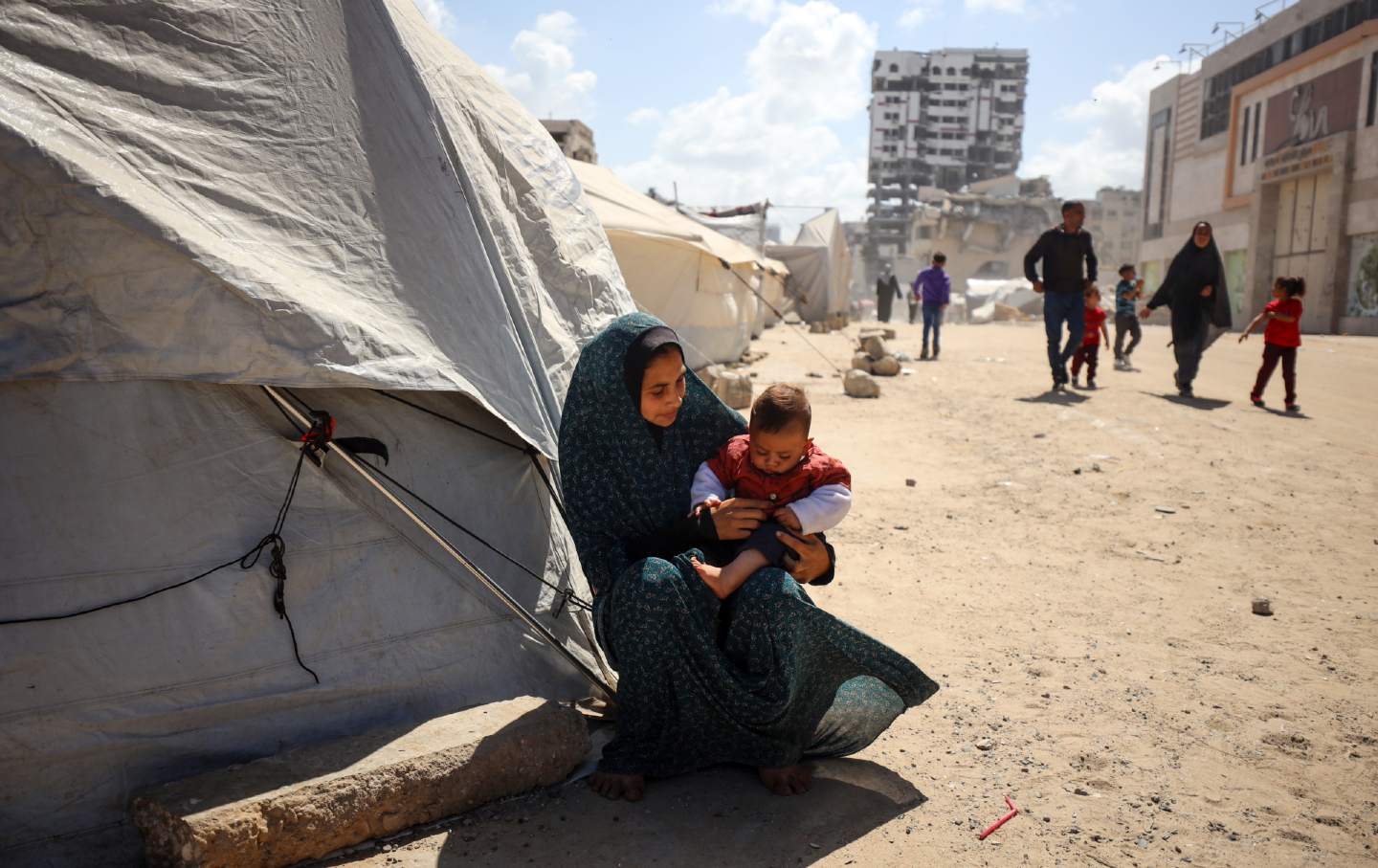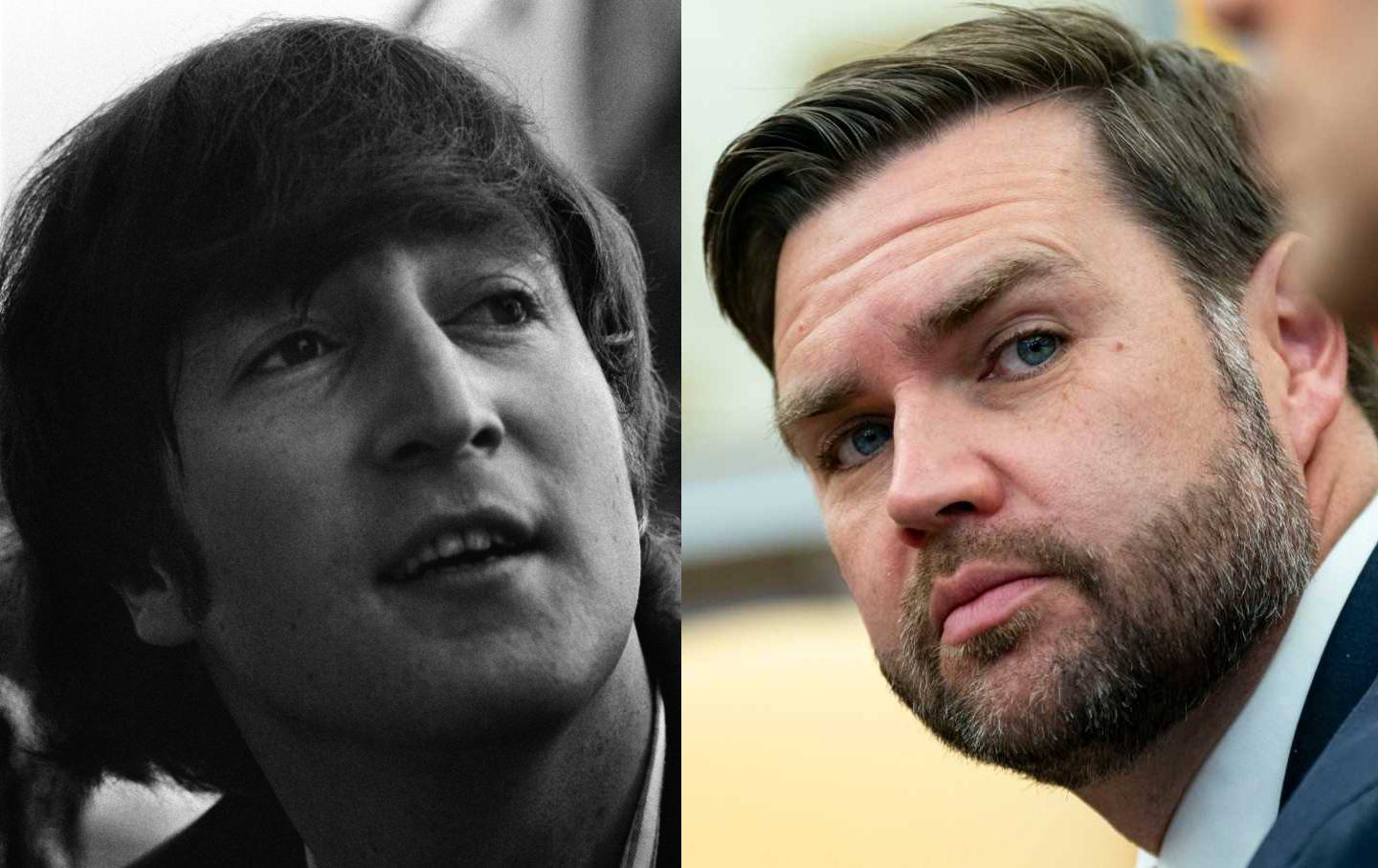As Long as We Use Drones, Celebrating “American Values” Is a Farce
After decades of asymmetrical warfare, Americans have lost touch with the humanity of civilians forced to endure the extreme violence of our “mistakes.”
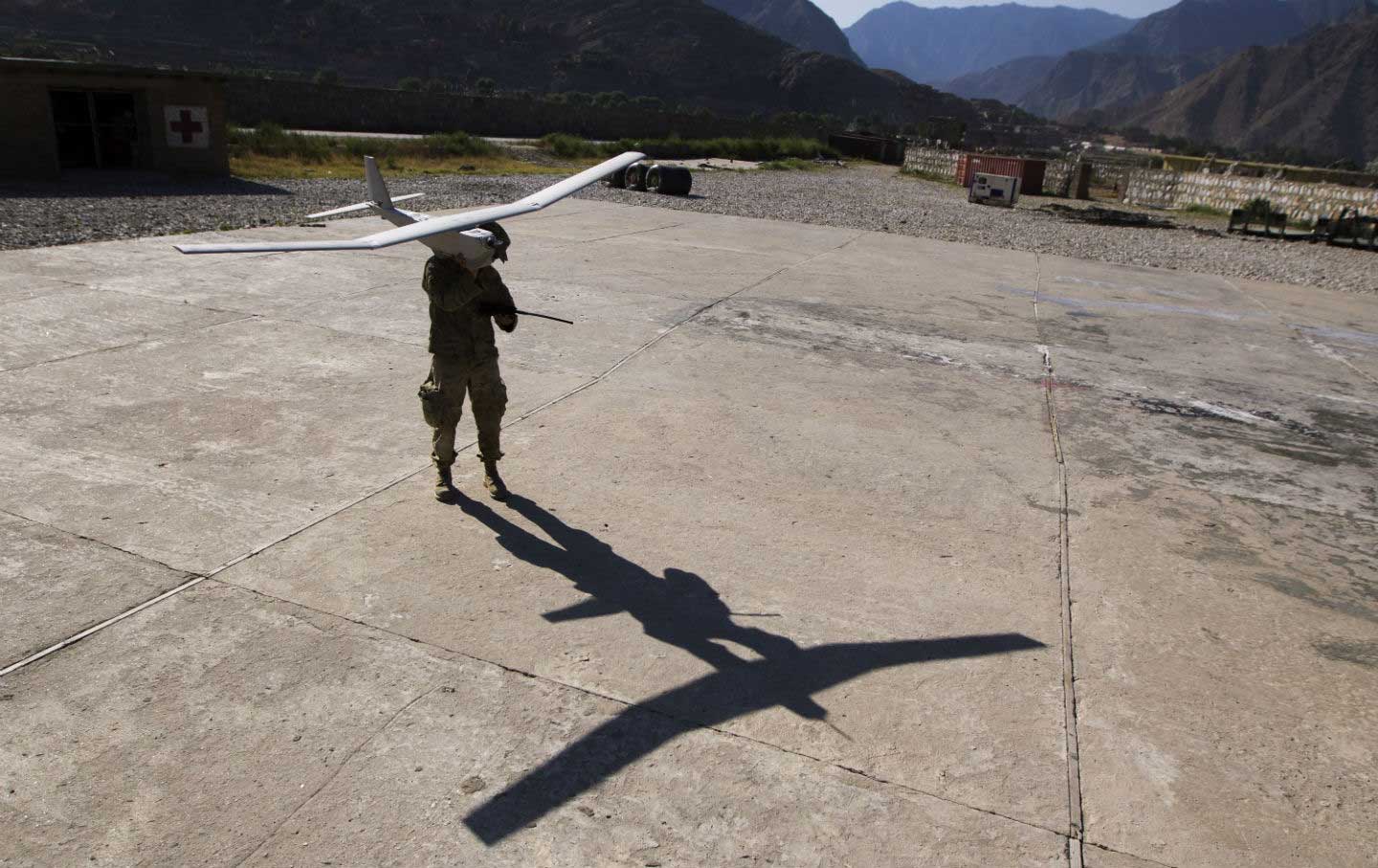
A soldier prepares to launch a drone in Afghanistan.
(Lucas Jackson / Reuters)This article originally appeared at TomDispatch.com. To stay on top of important articles like these, sign up to receive the latest updates from TomDispatch.com.
“I no longer love blue skies. In fact, I now prefer gray skies. The drones do not fly when the skies are gray.”
That’s what a young Pakistani boy named Zubair told members of Congress at a hearing on drones in October 2013. That hearing was during the Obama years at a time when the government had barely even acknowledged that an American drone warfare program existed.
Two years earlier, however, a Muslim cleric, Anwar Al-Awlaki and his 16-year-old son Abdulrahman, both American citizens, were killed by US drone strikes in Yemen just weeks apart. Asked to comment on Abdulrahman’s killing, Obama campaign senior adviser Robert Gibbs said: “I would suggest that you should have a far more responsible father if they are truly concerned about the well-being of their children. I don’t think becoming an Al Qaeda jihadist terrorist is the best way to go about doing your business.”
Those are two of all too many grim tales of the brutality with which the United States has carried out its drone warfare program. Post-9/11 reiterations by the government of the danger we now live in (because the US was attacked), have made the collective responsibility of Muslims and the callous dismissal of their deaths a regular occurrence.
In 2023, this country’s drone warfare program has entered its third decade with no end in sight. Despite this year being the 22nd anniversary of 9/11, policymakers have demonstrated no evidence of reflecting on the failures of drone warfare and how to stop it. Instead, the focus continues to be on simply shifting drone policy in minor ways within an ongoing violent system.
The Inherent Dehumanization of Drone Warfare
In February 2013, White House Press Secretary Jay Carney justified drone strikes as a key tool of American foreign policy this way:
We have acknowledged, the United States, that sometimes we use remotely piloted aircraft to conduct targeted strikes against specific al Qaeda terrorists in order to prevent attacks on the United States and to save American lives. We conduct those strikes because they are necessary to mitigate ongoing actual threats, to stop plots, prevent future attacks, and, again, save American lives.… The U.S. government takes great care in deciding to pursue an al Qaeda terrorist, to ensure precision and to avoid loss of innocent life.
More aggressively endorsing the use of such drones, Georgetown professor Daniel Byman, who has held government positions, emphasized the necessity of such warfare to protect American lives. “Drones,” he wrote, “have done their job remarkably well.… And they have done so at little financial cost, at no risk to U.S. forces, and with fewer civilian casualties than many alternative methods would have caused.”
In reality, however, Washington’s war on terror has inflicted disproportionate violence on communities across the globe, while using this form of asymmetrical warfare to further expand the space between the value placed on American lives and those of Muslims. As the rhetoric on drone warfare suggests, the value of life and the need to protect it are, as far as Washington is concerned, reserved for Americans and their allies.
Since the war on terror was launched, the London-based watchdog group Airwars has estimated that American air strikes have killed at least 22,679 civilians and possibly up to 48,308 of them. Such killings have been carried out for the most part by desensitized killers, who have been primed towards the dehumanization of the targets of those murderous machines. In the words of critic Saleh Sharief, “The detached nature of drone warfare has anonymized and dehumanized the enemy, greatly diminishing the necessary psychological barriers of killing.”
In his book On Killing: The Psychological Cost of Learning to Kill in War and Society, retired Army Lt. Col. Dave Grossman focuses on the “mechanical distancing” of modern warfare, thanks to “the sterile Nintendo-game unreality of killing through a TV screen, a thermal sight, a sniper sight, or some other kind of mechanical bugger that permits the killer to deny the humanity of his victim.” Scholar Grégoire Chamayou describes this phenomenon in even starker terms. Thanks to the distance between the drone operator and the victim, “One is never spattered by the adversary’s blood. No doubt the absence of any physical soiling corresponds to less of a sense of moral soiling.… Above all, it ensures that the operator will never see his victim seeing him doing what he does to him.”
Needless to say, drone technology has rendered those in distant lands so much more disposable in the name of American national security. This is because such long-range techno-targeting has created a profound level of dehumanization that, ironically enough, has only made the repeated act of long-distance killing, of (not to mince words) slaughter, remarkably banal.
In these years of the war on terror, the legalities of drone warfare coupled with the way its technology capitalizes on an unfortunate aspect of human psychology has made the dehumanization of Muslims (and so violence against them) that much easier to carry out. It’s made their drone killing so much more of a given because it’s taken for granted that Muslims in “target sites” or conflict zones must be terrorists whose removal should be beyond questioning—even after a posthumous determination of their civilian status.
Responsibility, Not Accountability
Popular
“swipe left below to view more authors”Swipe →At a 2016 press conference, President Barack Obama finally responded to a question about the increasing numbers of drone strikes by admitting: “There’s no doubt that civilians were killed that shouldn’t have been.” Then he added, “In situations of war, you know, we have to take responsibility when we’re not acting appropriately.”
Rare as such admissions of “responsibility” have been, however, they remain quite different from accountability. In Obama’s case, all that was offered to the survivors among those who “shouldn’t have been” killed in such drone strikes was an utterly minimal acknowledgment that it was even happening.
While the use of drones in the war on terror began under President George W. Bush, it escalated dramatically under Obama. Then, in the Trump years, it rose yet again. Halfway through Trump’s presidency, drone strikes had already exceeded the total number in the Obama era. Though the use of drones in Joe Biden’s first year in office was lower than Trump’s, what has remained consistent is the lack of the slightest accountability for the slaughter of civilians.
In 2021, as the United States was withdrawing chaotically from its 20-year Afghan War disaster, its military surveilled a white car driving around Kabul, believed it to be carrying explosives, and launched its final drone strike of that conflict, slaughtering 10 Afghans. Two weeks later, after reporting by The New York Times revealed what really happened, the Pentagon finally admitted that only civilians had been killed, seven of them children (but penalized no one).
Defense Secretary Lloyd Austin later apologized to the families of those killed and offered compensation—one of the few times American officials had even bothered to acknowledge wrongdoing in Afghanistan in the last 20 years. True to form, however, the government’s pledge to compensate the impacted families has gone unfulfilled, a grim reminder that in none of those years has there been any semblance of justice for civilian survivors of such drone strikes.
A few weeks ago, thanks to a Freedom of Information Act request, the Biden administration was forced to release a redacted version of a presidential policy memorandum, signed in October 2022, that detailed the administration’s latest approach to drone warfare globally. At least some details about it were known prior to its release, however, thanks to an anonymous senior administration official.
The Washington Post editorial board, among others, celebrated the memo, arguing that the restrictions in place are “smart rules of engagement” and a significant improvement over the Trump years when it comes to limiting civilian damage from drones. In reality, however, Biden’s memo is likely to do little to stem future drone warfare nightmares. In essence, the memo represents a return to Obama-era rules, including the supposed need to have “near-certainty” that the target of a drone strike is a terrorist and “near-certainty” that non-combatants won’t be injured or killed. The memo also includes other criteria that (at least theoretically) must be met before an individual is targeted, including an assessment that capture is not feasible.
In the case of Anwar Al-Awlaki, while the US claimed his capture wasn’t possible, members of his family disputed this. In a Democracy Now! interview, Al-Awlaki’s uncle Saleh bin Fareed stated, “I am sure I could have handed him over—me and my family—but they never, ever asked us to do that.” Needless to say, the lack of transparency has made it impossible to know if such standards are being met before a strike takes place and, worse yet, there’s no method of accountability if they aren’t.
That Biden administration memo does ban signature strikes that target individuals whose identities are unknown based on behavior suggesting they might be involved in terrorist activity. Still, we shouldn’t mistake a modestly better policy for a truly legal, moral, and ethical one, especially since the drone strike “mistakes” of the past haven’t led to any genuinely meaningful overhauls of the program.
Minimizing Civilian Deaths?
On September 20, 2001, nine days after the 9/11 attacks, President George W. Bush delivered a speech to a joint session of Congress in which he first used the phrase “war on terror,” while announcing a domestic and global campaign to be fought without borders or time constraints. Previewing what, years later, would become known as this country’s “forever wars,” he advised Americans that they “should not expect one battle, but a lengthy campaign unlike any other we have ever seen. It may include dramatic strikes visible on TV and covert operations secret even in success.”
Cameroonian political theorist Achille Mbembe’s theory of necropolitics—that is, the politics of death—catches the essence of the war on terror Bush launched as a way of life (and death)—“the capacity to define who matters and who does not, who is disposable and who is not.” With the invasion of Afghanistan and the designation of entire largely Muslim parts of the planet as the enemy, the Bush administration began a “war” in which Muslim deaths were necessary for the protection and preservation of American ones. This set a precedent for the value of Muslim life when the act of killing them could be equated with the security of Americans and the protection of “the homeland.”
Twenty-two years later, drones continue to be instruments of civilian slaughter and the language deployed by successive administrations to describe such slaughter has served to sanitize that fact. Whether it’s the use of “target” or “collateral damage,” both minimize the reality that human beings are being murdered. Taken together with a larger war-on-terror narrative in which Muslims have been strikingly demonized and criminalized, the result has been the production of killable bodies whose deaths elicit neither guilt, remorse, nor accountability.
In his 2014 State of the Union address, President Obama explained why he put “prudent limits” on drone warfare, pointing out that Americans “will not be safer if people abroad believe we strike within their countries without regard for the consequence.” And how right he was.
As yet, however, there have been zero consequences for the air-strike deaths of tens of thousands of civilians globally and, as Obama’s statement suggests, the only real concern this caused American officials was the fear that too many such killings might, in the end, harm Americans.
Grieving Muslim Lives
In Sana’a, Yemen, a wall with graffiti art shows a US drone under which someone has written in blood-red paint, “Why did you kill my family?” in English and Arabic. The relentless American drone campaign has indeed left all too many civilians in Muslim-majority countries asking the same question. The only answer offered in Washington over all these years is that such killings were unavoidable collateral damage.
But imagine, for a moment, what Americans might do if their family members were regularly being killed by drones because another government claimed “near certainty” that they were terrorists? You know the answer, of course, given the response to the 9/11 attacks: This country would undoubtedly launch a catastrophic war of epic proportions with no conceivable end in sight. In contrast, Muslims targeted by American drones have been left to pick up the all-too-literal pieces of their loved ones, while risking the possibility of also being killed in a double- or triple-tap strike—a level of violence that should never be justified.
We should all reject a war on terror committed to the disposability of Muslims because no one (including Muslims) should have to mourn the killing of civilians the United States has targeted for far too long. Muslim lives have inherent value and their deaths are worth grieving, mourning, and above all valuing. Drone warfare will never change that fact.


